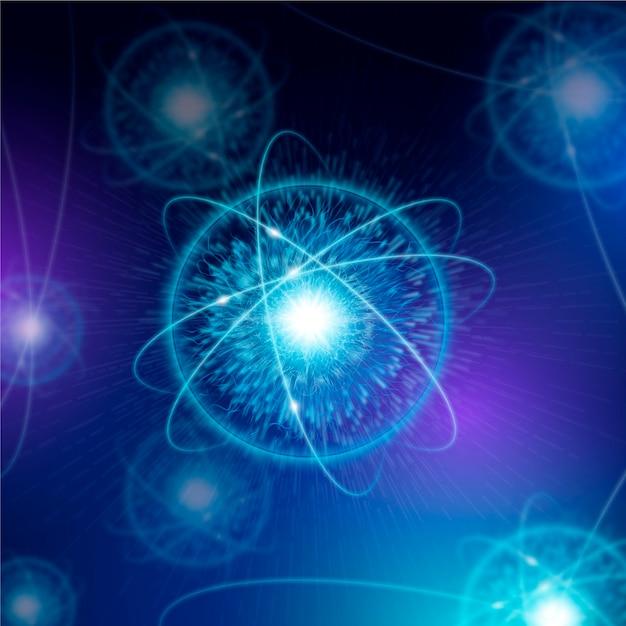Did you know that there’s a hidden code in the world of atoms? It’s called quantum numbers, and it helps us decipher the secrets of the subatomic realm. In the realm of chemistry, quantum numbers play a vital role in describing the properties of electrons within an atom. If you’re eager to unravel the mysteries of quantum numbers and their significance in chemistry, you’ve come to the right place!
In this blog post, we’ll explore the four quantum numbers and their significance in understanding the behavior of electrons. We’ll dive into topics like the formula of the azimuthal quantum number and the spin quantum number, all in plain, simple terms. Whether you’re a chemistry enthusiast or simply curious about the building blocks of matter, this blog post will provide you with the knowledge you need to navigate the quantum world. So, let’s embark on this quantum adventure and uncover the secrets of quantum numbers together!
So, what are we waiting for? Let’s dive into the fascinating world of quantum numbers and uncover their significance in the realm of chemistry!

What is the Significance of Quantum Number?
Understanding the Quantum World: Unlocking the Secrets of Quantum Number
Have you ever wondered how scientists keep track of all the tiny particles that make up our universe? Well, they have a nifty little tool known as the quantum number. And let me tell you, it’s like their secret decoder ring to the quantum world! So, let’s dive in and uncover the significance of this intriguing concept.
The Breakdown: What Exactly is a Quantum Number
Simply put, a quantum number is like a fingerprint for subatomic particles. It helps us differentiate one particle from another and provides crucial information about its properties. Just like how we have different characteristics that distinguish us from one another – like eye color or height – particles have quantum numbers that set them apart in the quantum realm.
Quantum Number: The Quantum Catalogue of Particles
Think of quantum numbers as the entries in a particle catalogue. Each entry contains unique information about a specific particle’s energy, spin, orbital shape, and orientation in an atom. Like the Dewey Decimal System for library books, quantum numbers organize particles and allow scientists to access their properties with ease.
The Quantum Quartet: Principal, Azimuthal, Magnetic, and Spin Quantum Numbers
Now let’s meet the main characters of our quantum number adventure: the principal, azimuthal, magnetic, and spin quantum numbers. These four digits work together to form a quantum address for each particle.
Stellar Spotlight: The Principal Quantum Number
First up is the principal quantum number, denoted as “n.” It represents the energy level or shell in which an electron occupies within an atom. Picture it as the floors in a skyscraper, with each floor representing a different energy level. The higher the principal quantum number, the farther away the electron is from the nucleus.
The Azimuthal Quantum Number: Shaping the World of Orbitals
Next, we have the azimuthal quantum number, symbolized as “l.” It determines the shape of the electron’s orbital within a specific energy level. This quantum number reveals whether the orbital is spherical or has a more complex shape, such as a dumbbell or a double dumbbell (yes, we’re serious!). So, be prepared to enter a world of wacky and wonderful orbital shapes!
The Magnetic Quantum Number: Poles Apart
Now, let’s meet the magnetic quantum number, denoted as “m.” This number describes the orientation of the orbital in space. Think of it as the needle on a compass, pointing to different directions around the nucleus. The value of the magnetic quantum number depends on the value of the azimuthal quantum number. So, prepare to navigate through the magnetic maze of quantum physics!
The Spin Quantum Number: Dizzying Spins and Quantum Disco
Last but not least, we have the spin quantum number, represented as “s.” It describes the spin of an electron, which is like its intrinsic angular momentum. Imagine electrons rocking and spinning at their own little quantum disco party! The spin quantum number can only have two values: +1/2 or -1/2, denoting the spin-up and spin-down states, respectively.
The Quantum Dance: How Quantum Numbers Bring Order to the Chaos
Now, let’s see how these quantum numbers work together. Picture an atom as a lively dance floor filled with electrons. The principal quantum number determines which floor an electron is on, the azimuthal quantum number shapes its dance moves, the magnetic quantum number points it in the right direction, and the spin quantum number ensures it grooves in the correct spin direction. It’s a delicate choreography that keeps the atomic dance in perfect order!
So, Why Do Quantum Numbers Matter
Quantum numbers are essential because they allow scientists to predict and comprehend the behavior and properties of particles. They provide a systematic way to organize and navigate the quantum world. Without them, the subatomic realm would be an unruly and confusing mess. So, next time you hear about quantum numbers, remember that they are the backstage pass to unraveling the mysteries of our universe – one particle at a time!
Conclusion
In conclusion, quantum numbers are the key to understanding the properties and behavior of subatomic particles. They are like fingerprints that make every particle unique and allow scientists to categorize and study them with precision. So, the next time you hear someone mention quantum numbers, you can impress them with your newfound knowledge of this fascinating quantum cataloging system. Keep exploring the quantum world and let the quantum numbers be your guide!

FAQ: The Significance of Quantum Numbers
What are the four quantum numbers of carbon
Quantum numbers are used to describe the location and energy of electrons within an atom. Carbon, like any other element, has four quantum numbers: the principal quantum number (n), the azimuthal quantum number (l), the magnetic quantum number (ml), and the spin quantum number (ms).
What is the formula for the azimuthal quantum number
The formula to calculate the azimuthal quantum number is 2l + 1, where ‘l’ represents the angular momentum quantum number.
What is the significance of quantum numbers
Quantum numbers play a vital role in understanding the behavior of electrons. They specify various properties of the electrons, such as their energy levels, orbital shapes, and spin orientations. By understanding the significance of quantum numbers, we can decipher the complex dance of electrons within atoms.
What is the spin quantum number in chemistry
Ah, the spin quantum number, an intriguing little entity! In chemistry, it describes the spin orientation of an electron. The spin of an electron can either be “up” or “down,” and it affects the magnetic properties of atoms. Think of it as the electron doing a little twirl, showing off its personality.
What are the quantum numbers for the three electrons of lithium
Oh, dear lithium and its three electrons, ready to spill their quantum secrets! Each electron in lithium is characterized by four quantum numbers: the principal quantum number ‘n’, which determines the energy level; the azimuthal quantum number ‘l’, which indicates the shape of the electron’s orbital; the magnetic quantum number ‘ml’, which specifies the orientation of the electron within the orbital; and the spin quantum number ‘ms’, which tells us if the electron is grooving with an “up” or “down” spin. It’s like a quantized electron party inside the lithium atom!
So there you have it, a glimpse into the captivating world of quantum numbers. These tiny numerical values hold the key to understanding the behavior of electrons in their atomic playgrounds. Whether they’re spinning up or down, dancing in a cute little orbital, or bouncing around different energy levels, quantum numbers help us unravel the mysteries of the subatomic realm. Embrace these numbers, marvel at their significance, and let them guide you through the enchanting world of quantum mechanics!
Remember, just because we can’t see them doesn’t mean they’re not busting some serious moves!
